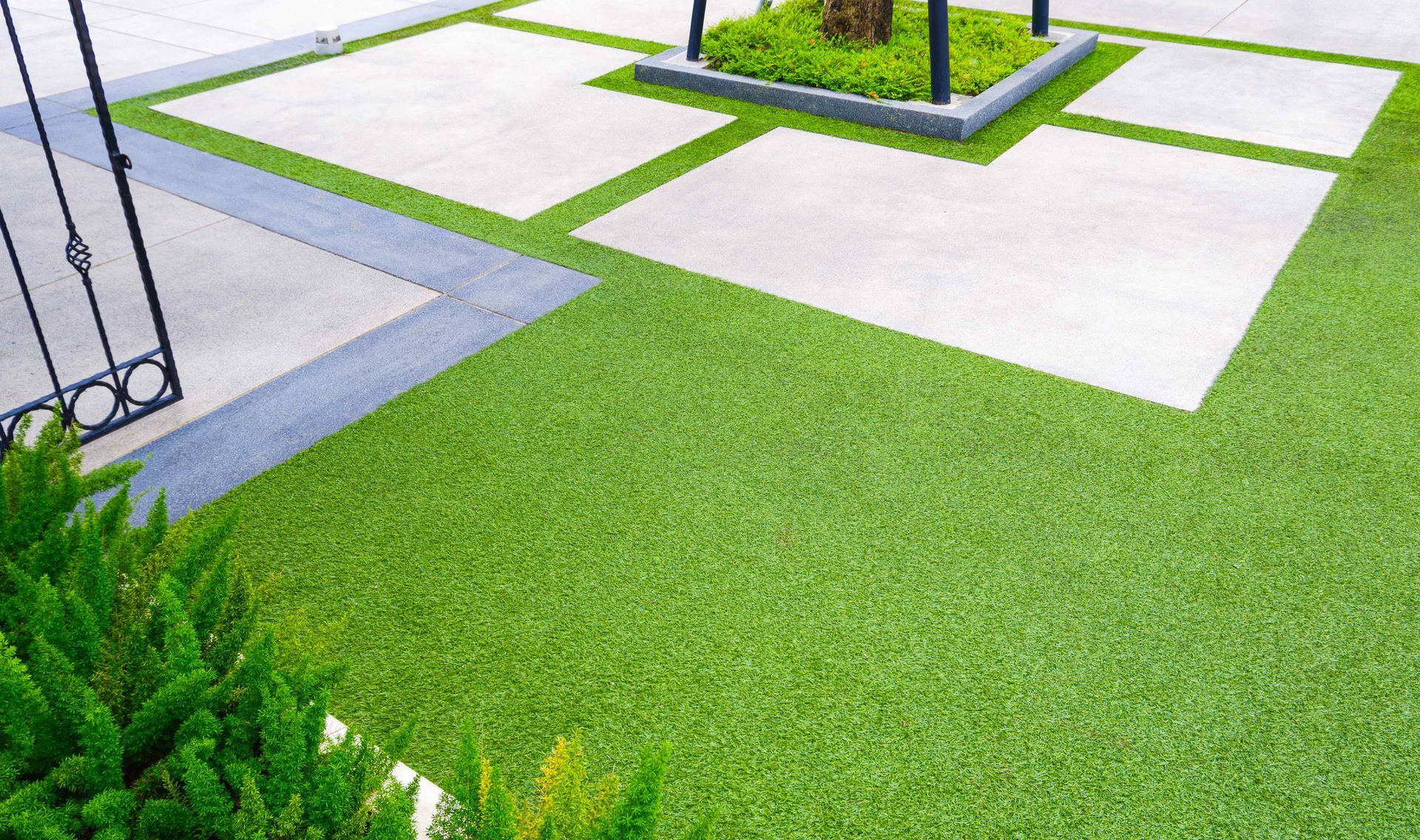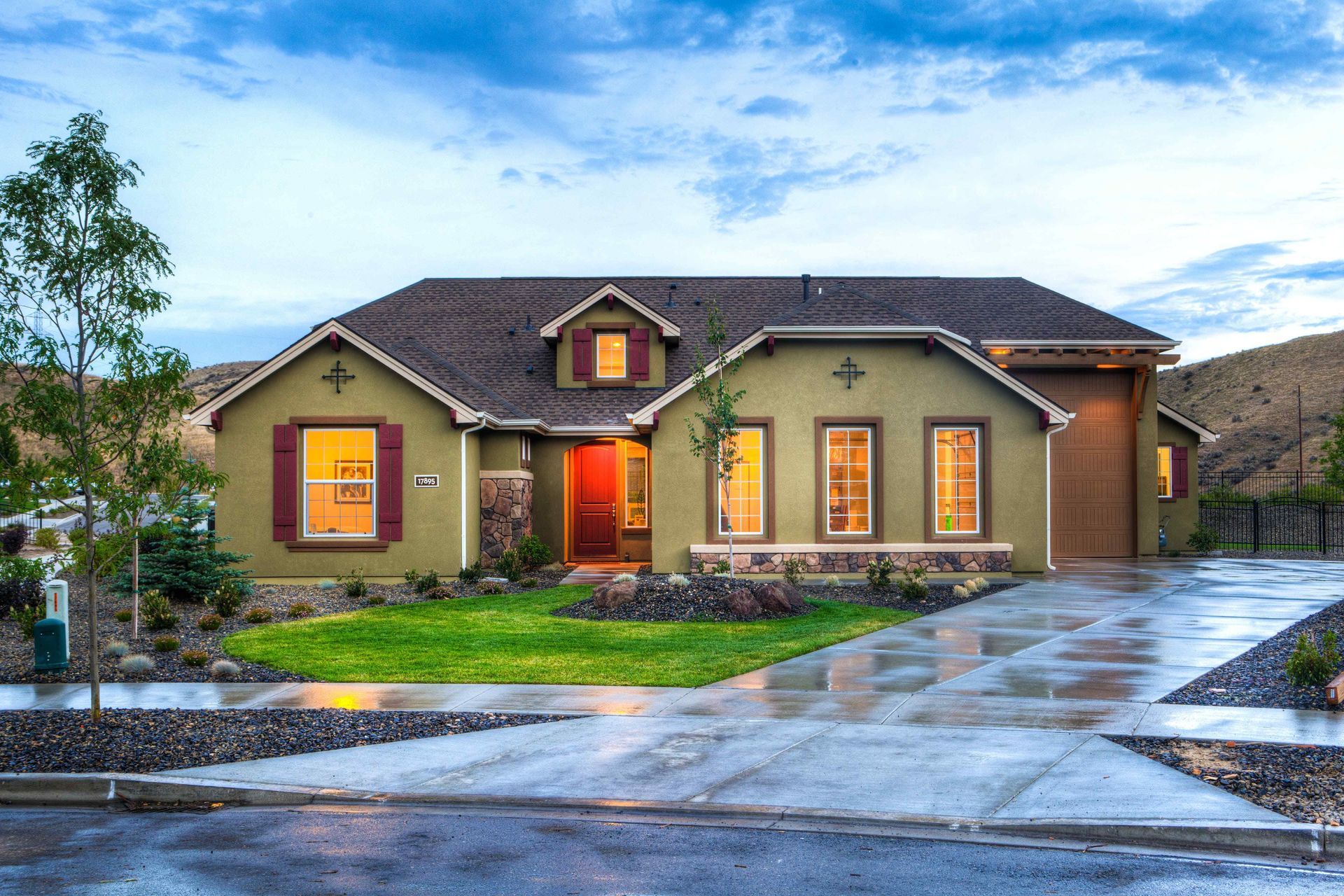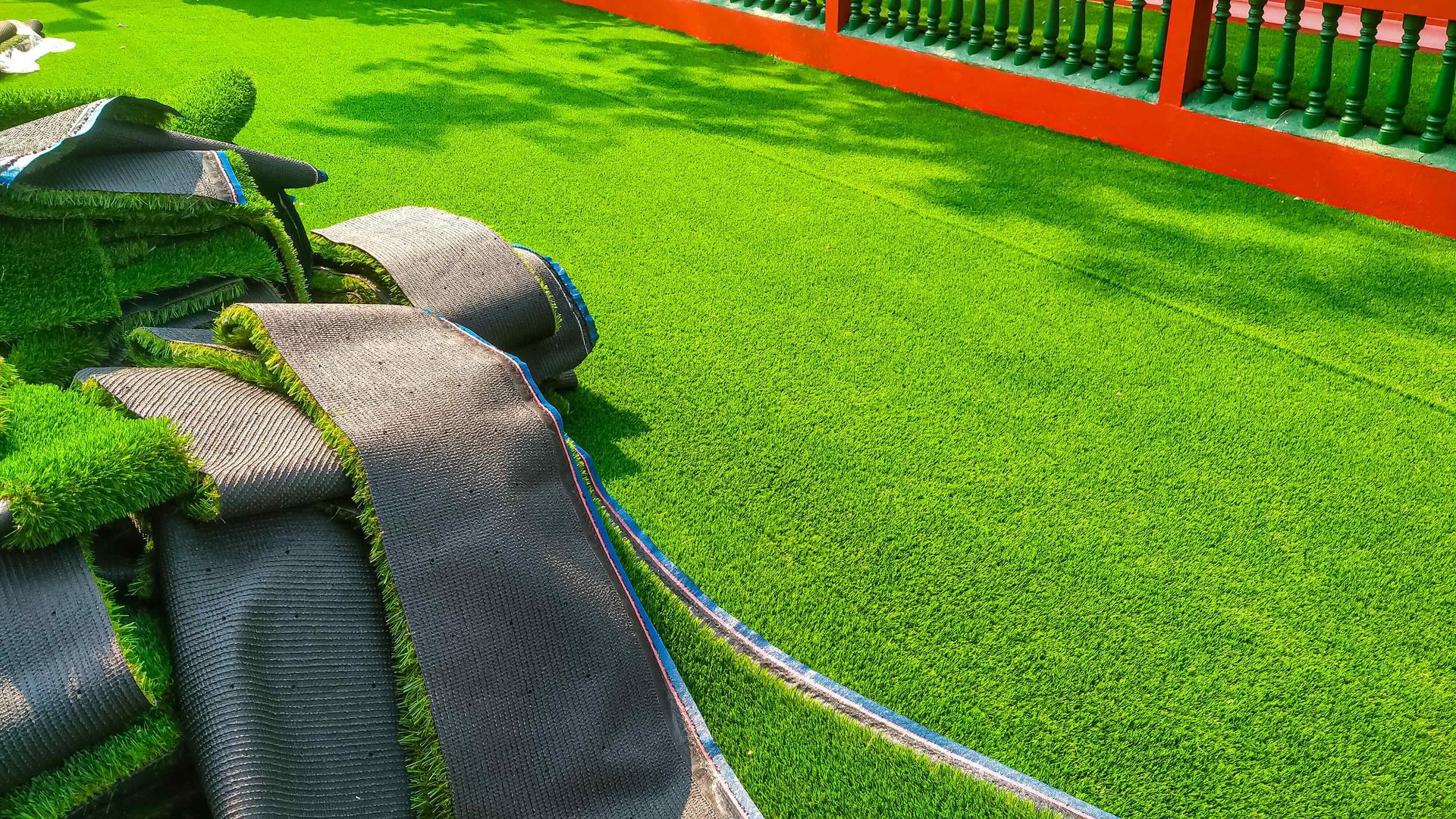Artificial Turf Installation Lubbock TX
Artificial Turf Installation Services in Lubbock, Texas
Welcome to Affordable Landscapes Lubbock! We are your premier choice for artificial turf installation in Lubbock, Texas. Our team installs artificial turf for residential and commercial properties. From enhancing residential yards to creating safe and long-lasting play areas to upgrading sports facilities, we can handle it. Our team doesn't just install synthetic turf; we also remove and repair it. If you need old turf replaced, look no further.
What is Artificial Turf?
Artificial turf is often referred to as synthetic grass. It's a surface made from synthetic fibers designed to mimic the look, feel, and function of natural grass. It has become a popular solution for various settings. This is because of its durability and minimal upkeep requirements. The concept of synthetic turf originated in the mid-20th century. The first large application was at the Astrodome in Houston, Texas, in 1966. Originally named "ChemGrass," it was later branded as "AstroTurf" after its famous installation. This innovation was driven by the desire to have lush, green grass indoors where real grass struggled to grow.
What is Artificial Turf Made Out Of?
The materials used to make artificial grass have evolved over the years. In the early days, abrasive nylon fibers were common. Today, we have many more options. Modern artificial grass consists of polyethylene or polypropylene fibers for the blades. The backing material is made from polyester or a mix of polyester and rubber. The fibers are tufted into the backing to create a dense, grass-like layer. A final layer of infill is added. This can be made of sand, crumb rubber, or a combination of both. It is spread between the fibers to provide stability and cushioning.
Artificial Turf for Residential Use
Today, synthetic turf has expanded beyond sports fields and is widely adopted in residential settings. Homeowners choose synthetic turf as a practical landscaping solution. It eliminates the need for irrigating, mowing, and fertilizing. This means significant water savings and reduced labor and upkeep costs. Additionally, artificial grass is always green meaning your backyard looks great all year long. This is advantageous in areas where keeping a real grass lawn would be challenging.
Residential uses of artificial turf include lawns, gardens, play areas for children, pet areas, and around pool decks. It provides a clean, mud-free environment for outdoor activities. It's also good for shaded areas where traditional grass might struggle to grow. Moreover, it is hypoallergenic and does not require pesticides or fertilizers. As a result, it is a safe choice for families looking to create a low-allergen landscape. Synthetic grass offers a versatile, natural appearance, while being a sustainable alternative to traditional grass.
Get Instant Quote
Affordable Landscapes Lubbock Lead Form
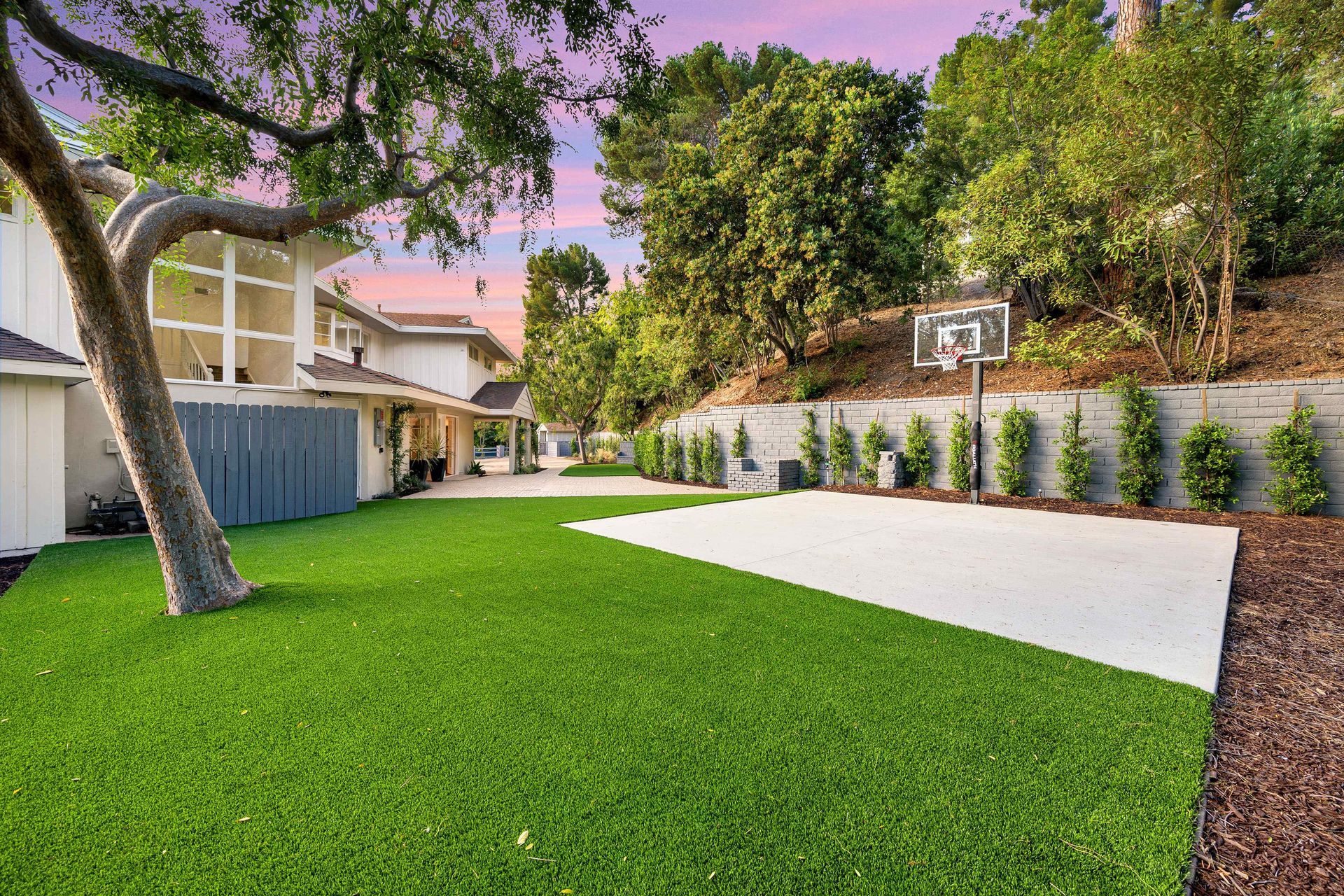
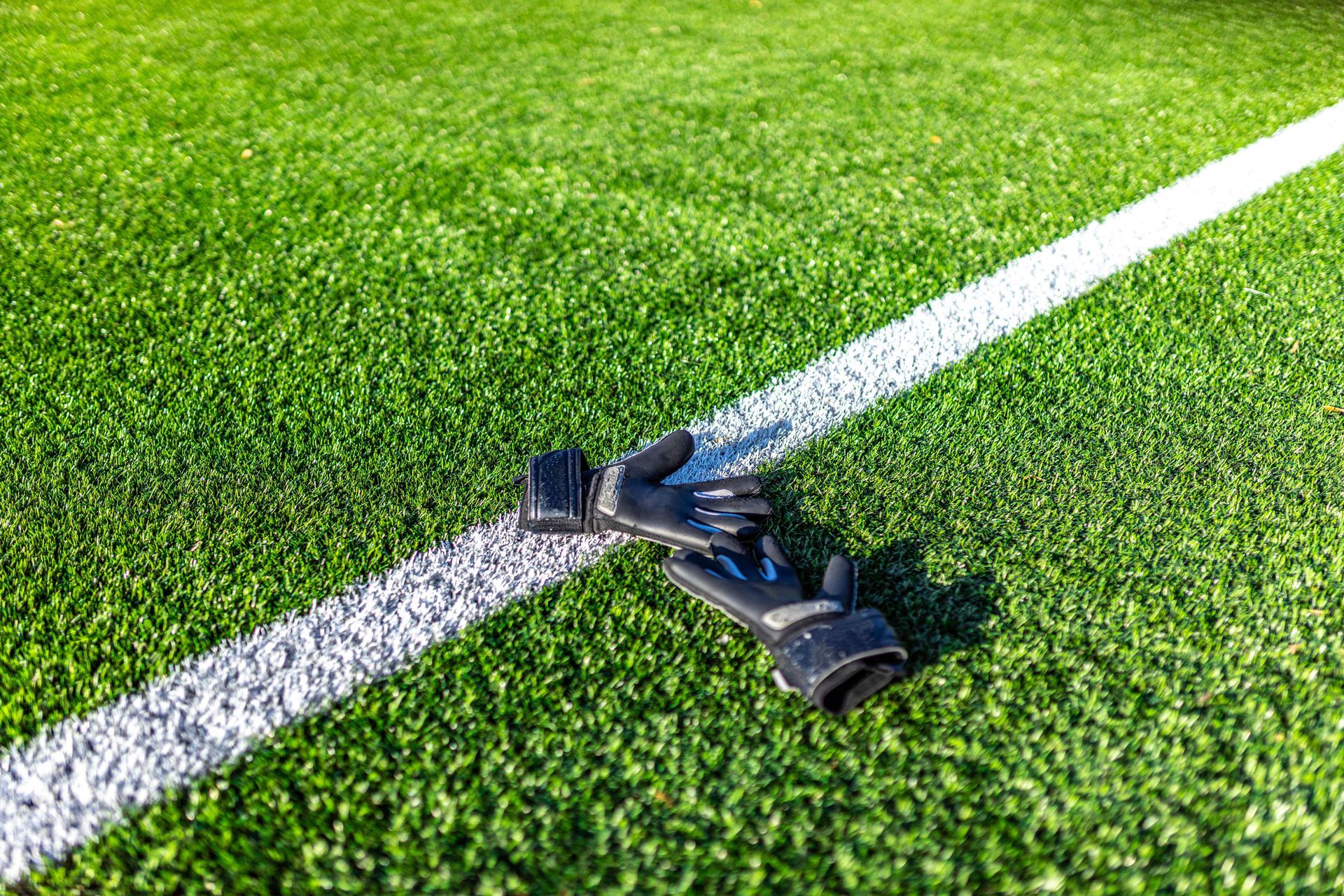
When Homeowners in Lubbock Texas Need Artificial Turf Solutions Designed & Installed, They Call Us!
Benefits of Artificial Turf
Synthetic grass offers many benefits that make it an attractive alternative to traditional grass. especially in residential and commercial landscapes. One of its most significant advantages is its minimal maintenance requirements. Unlike traditional grass, synthetic grass does not need to be irrigated, mowed, or seeded. This greatly reduces upkeep costs and labor. The fact that irrigation is not needed is beneficial in drought-prone regions like West Texas. Additionally, synthetic grass stays green and lush all year round. There's no need to mow, fertilize, or use pesticides. You get a beautiful, green landscape regardless of the weather conditions.
The benefits of synthetic turf extend to environmental and safety advantages:
- Water Conservation: Artificial turf eliminates the need for regular irrigating. This saves thousands of gallons of water annually and contributes to sustainable resource management.
- Durability: Synthetic turf is designed to withstand heavy use. It remains intact and attractive even in high-traffic areas. This makes it ideal for playgrounds, sports fields, and commercial venues.
- Cost-Effective: The initial investment is often higher than that of traditional grass. But, the long-term savings on maintenance, water, and care make synthetic turf a cost-effective solution over time.
- Safety Features: Modern synthetic turf is engineered to be non-slip. They can include padding to reduce injury risk. Because of this, they're safer for sports and children’s play areas than traditional grass.
- Allergy Reduction: Unlike regular grass lawns, synthetic grass does not produce pollen or harbor as many insects. This can help reduce allergic reactions among sensitive individuals.
- Aesthetic Versatility: Synthetic grass can be installed where traditional grass might not thrive. This offers flexibility in landscape design. It also means that artificial turf is always green regardless of the climate.
-
These attributes highlight why synthetic turf is so popular. It originated in sports arenas and now thrives in residential settings. This is due to the level of efficiency and aesthetic artificial grass brings.
Types of Artificial Turf
There are many types of artificial turf solutions. Each is designed to meet specific needs and preferences. The type of synthetic grass can influence the area's aesthetics, functionality, and maintenance level. Understanding artificial turf types can help owners of homes and businesses. It allows them to select the best option for their landscapes, sports fields, or play areas.
Polyethylene Turf
This is one of the most popular types of artificial turf for residential and public landscapes. It has a soft texture and realistic appearance. Polyethylene fake grass blades are designed to closely mimic the look and feel of natural grass. They are durable, non-abrasive, and UV-resistant. This helps maintain their color and integrity over time. Polyethylene is ideal for areas where children and pets play, offering a balance between softness and durability.
Nylon Turf
Known for its strength and resilience, nylon turf is the toughest of the artificial grass options. It can withstand high temperatures and heavy foot traffic. Thus, it is suitable for sports facilities, playgrounds, and commercial properties. Nylon's rigidity helps it maintain an upright blade structure without the need to frequently add fill. But, it can feel less soft compared to polyethylene and real grass.
Polypropylene Turf
This is the most cost-effective type of artificial grass. As a result, it's a popular choice for homeowners on a budget and for indoor facilities like putting greens and decorative areas. However, polypropylene fibers are less durable than polyethylene or nylon. This type of turf is more suitable for low-traffic areas. It tends to wear out faster when exposed to high traffic or harsh weather conditions.
Each type of artificial grass has its unique properties and uses. It is important to consider your project's specific requirements when choosing. Artificial grass requirements vary, particularly between residential and commercial properties. Some need a durable surface for sports, whereas others need a safe play area for kids. And still others would like a low maintenance lawn. There's an artificial grass suited to meet your needs. Choose the right turf type to ensure performance, longevity, and the desired look.

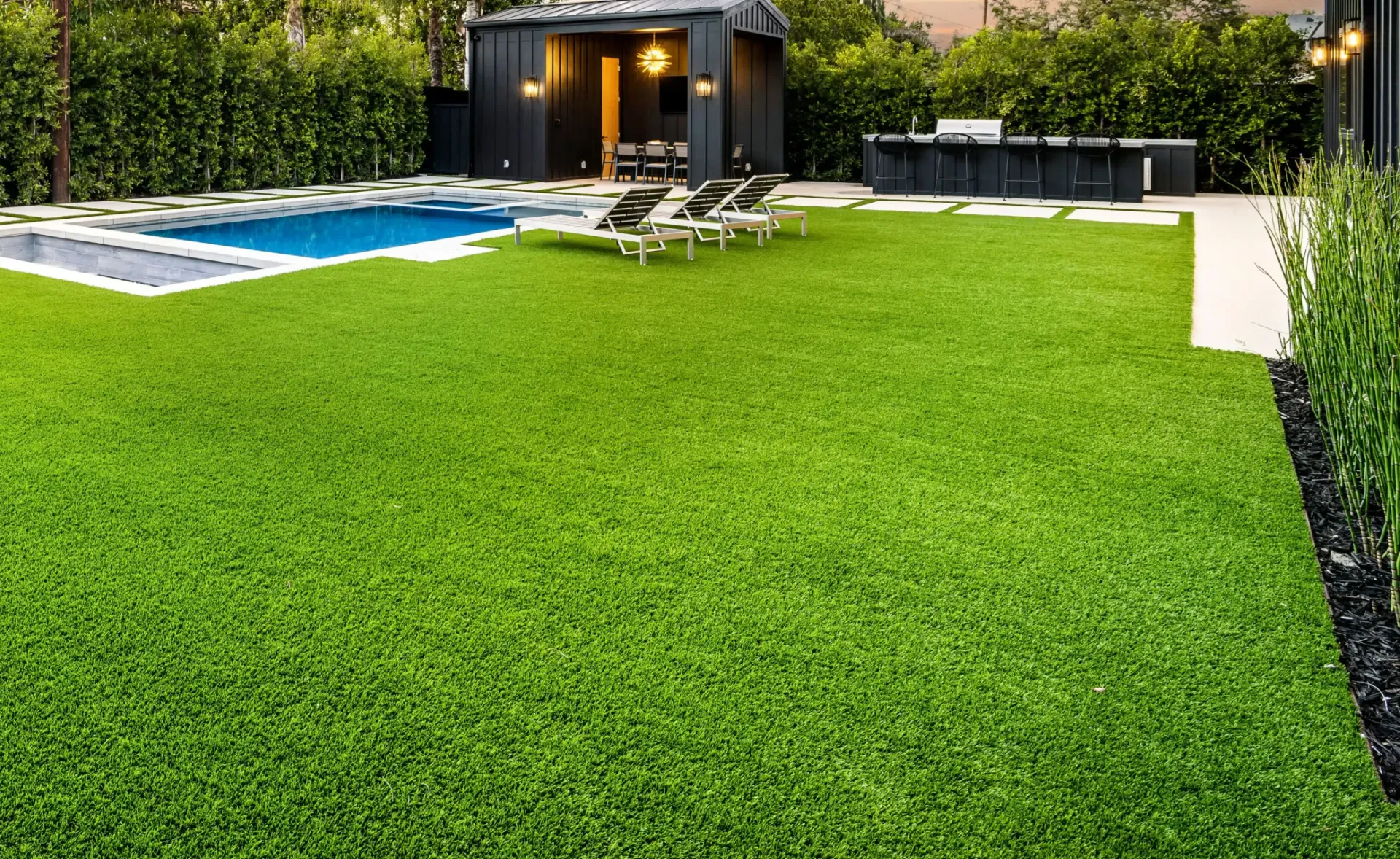

Artificial Turf Installation
The installation process for synthetic turf is meticulous. It requires careful planning and execution to ensure the final result is appealing and durable. This process involves several key steps for installing artificial grass. Each step is critical to achieving a well-functioning and long-lasting synthetic turf surface. Here’s an overview of how we install artificial turf:
Site Preparation
This initial phase is crucial as it sets the foundation for the synthetic grass installation. The process begins with the removal of any existing grass or vegetation. The soil is then leveled and compacted. This process prevents any uneven surfaces that could affect the appearance and drainage of the synthetic turf. In some cases, a slight gradient is created to help water runoff the turf.
Base Construction
After the area is prepared, a base layer is added to provide stability and proper drainage. This layer consists of crushed gravel or limestone, spread evenly and compacted firmly. The depth and type of base material can vary. It is dependent on the turf application and local soil conditions.
Weed Barrier Installation
A geotextile weed barrier is laid over the base. This prevents weeds from growing through the turf. This fabric also helps stabilize the base material. In short, it contributes to the longevity of the turf system.
Laying the Turf
After the weed barrier is down, our team will install artificial turf. Synthetic turf rolls are laid out next. All pieces must align properly, and the grain of the turf fibers must all face the same direction. Seams are then secured using specialized tape or glue, providing a seamless look. It’s important to avoid any wrinkles or folds, as these can affect the turf's appearance and performance.
Trimming and Securing
Once the turf is aligned, it’s trimmed to fit the boundaries of the installation area. The edges are then secured to the ground. This is done using 6-inch nails or staples spaced appropriately to prevent any lifting or shifting of the turf.
Infill Application
The final step involves applying an fill material. This helps keep the turf blades upright and provides more cushioning. Common fill options include crumb rubber, silica sand, or a mixture of both. The fill is spread across the turf and then brushed into the fibers using a power broom. This process stabilizes the turf and gives it a realistic look and feel.
By following these steps, we perform artificial turf installation the right way. This will provide a durable, attractive, and low-maintenance surface. Properly installing synthetic turf can enhance the functionality and aesthetics of any space. This applies to residential backyards with artificial lawns, commercial properties, sporting venues, and more.
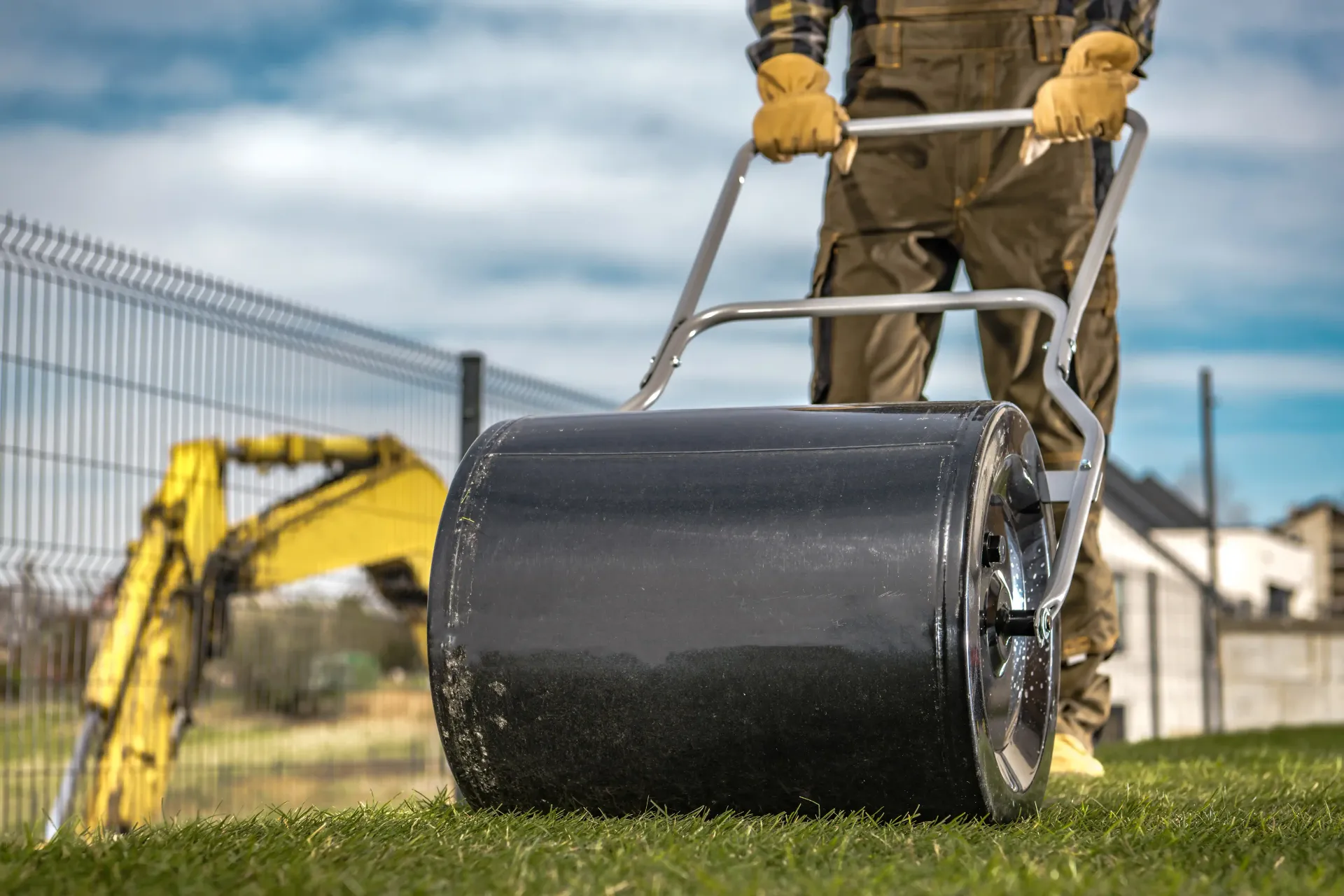

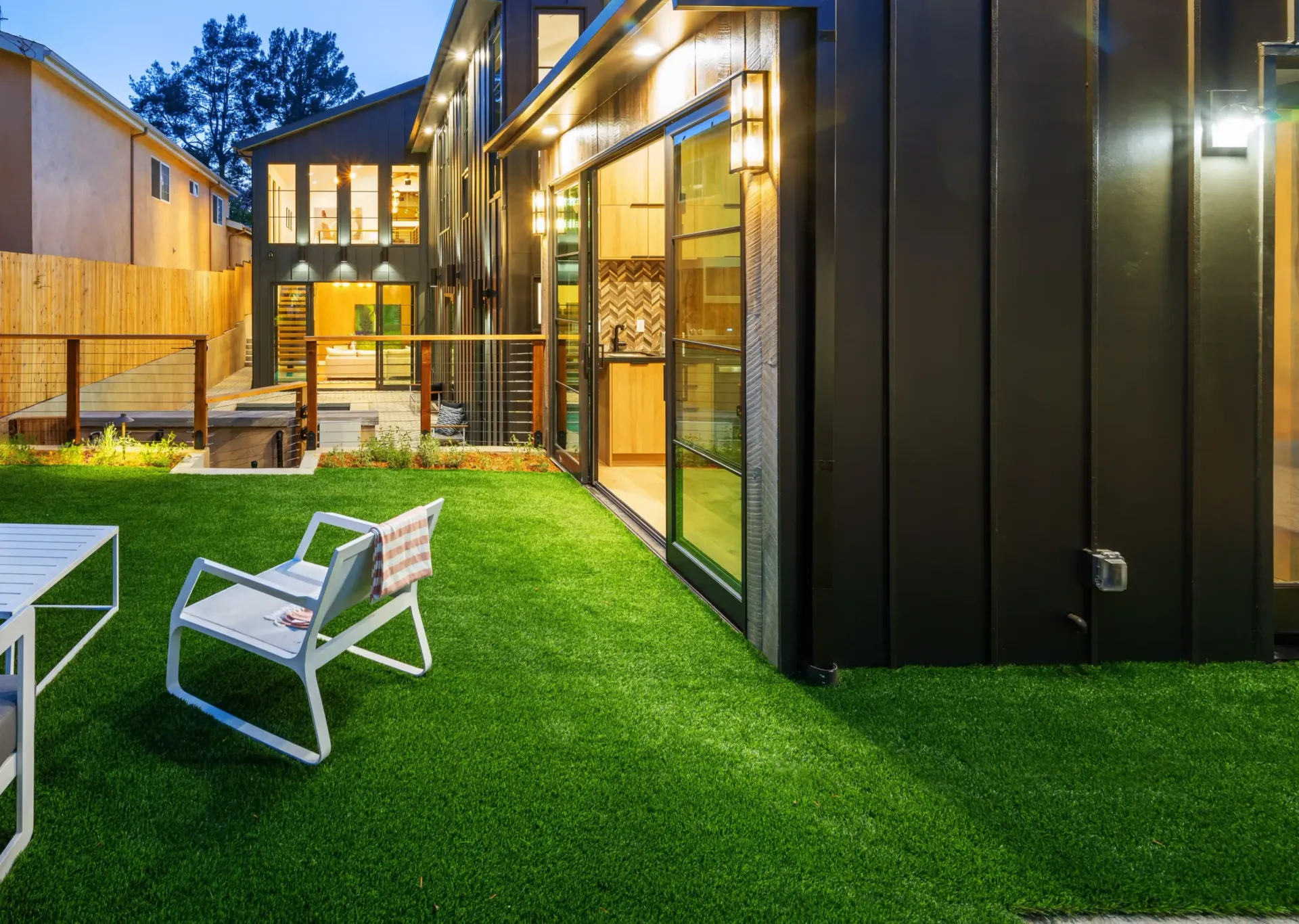
Artificial Turf Maintenance
Maintaining synthetic grass is straightforward and less labor-intensive than caring for natural grass. But, it still requires some regular attention to avoid installing artificial grass again due to preventable degradation of your turf! For residential and commercial properties, it's important to follow a simple maintenance routine. This will ensure their synthetic lawn remains vibrant, clean, and functional for years. Here are essential maintenance tips for synthetic grass:
Regular Cleaning: The most basic maintenance for synthetic grass involves keeping it clean. Use a leaf blower to remove leaves and debris. This prevents organic material from decomposing on the turf. When this happens, it can cause drainage problems and encourage weed growth.
Rinsing: Periodically rinsing your turf helps to wash away dust and small debris. This is especially important in dry climates where rain is infrequent. A gentle spray with a hose is enough to keep your turf fresh and clean.
Brushing: To prevent the fibers from becoming matted, synthetic grass should be brushed regularly. To do so, use a stiff, natural-bristle broom or a turf rake. This keeps the blades standing upright and makes it look like real grass. Brushing is necessary in high-traffic areas, where the turf is more likely to flatten.
Spot Cleaning: Spills and stains can happen, especially if pets use the area or if there are frequent gatherings. Most spills can be cleaned with water and mild household detergents. For tougher stains, a solution of water and vinegar can be effective. It’s important to clean spills as soon as they occur to prevent them from setting.
Weed Control: Although synthetic grass reduces the growth of weeds, some can still appear. this often happens along the edges or through the drainage holes. Applying a water-based weed killer twice a year can help manage breakthrough growth without damaging the turf.
Pet Waste: For homeowners with pets, using artificial turf for pet areas can be very practical as it is easy to clean. Solid waste should be removed promptly. The area should then be rinsed with water. For urine, perform occasional deep cleaning. Using enzymatic cleaners designed for synthetic grass can help neutralize odors.
Annual Check-up: Once a year, it's beneficial to do a more thorough inspection and maintenance of your turf. This can include re-brushing the fibers, checking the fill levels and adding more if necessary. You'll also need to ensure that the drainage system is not obstructed.
By following these tips, homeowners can keep their artificial turf in top condition. Enjoy a beautiful fake lawn that is continually green with minimal effort. This low-maintenance aspect is one of the key reasons many choose artificial turf. In this regard, it is superior to a natural grass lawn.
Understanding Artificial Grass Cost
The cost of artificial turf can vary widely depending on several factors. These include the quality of the materials, the size of the area, removal of existing grass, and the complexity of the installation. Generally, residential and commercial properties can expect the price for artificial turf to range from $5 to $20 per square foot. Most residential projects average between $6 and $12 per square foot. This cost encompasses the turf material, base materials, fill, and professional installation fees.
Material Quality: The type of artificial turf chosen plays a large role in the cost. Higher-end synthetic grass with longer, denser, and more natural-looking fibers is more expensive. But, it is also more durable and looks better. Economical options are available. However, they may not perform as well under heavy use or may look less like natural grass.
Installation Area: The size of the artificial grass installation area is a direct factor in cost calculation. Larger areas need more materials and labor. This increases the project's total cost. However, installing artificial turf over a vast area can reduce the cost per square foot. This is due to economies of scale in material purchases and labor.
Installation Complexity: The complexity of the installation can also affect the price. For example, areas with many curves, slopes, or many cut-outs for landscaping features are challenging. They require much more time and precision during installation. This increases labor costs.
Additional Costs: Beyond the basic artificial grass installation, additional costs may be involved. Preparing the site can add to the expenses. This can include removing existing real grass, leveling the ground, and installing drainage systems. Additionally, some homeowners may include extra features. Things like padding for playgrounds or specific types of infill for fake grass pet areas will increase the price.
Long-Term Savings:
The initial investment in artificial turf is significant. But, it's important to consider the long-term savings it offers. Artificial turf eliminates the need for watering, mowing, and fertilizing. It is low maintenance and greatly reduces ongoing maintenance costs. Moreover, it is durable and can last 15 to 25 years with proper care, making it a cost-effective option over time.
Why Choose Affordable Landscapes Lubbock?
Choosing Affordable Landscapes Lubbock for your artificial turf installation means the following. You're selecting a partner committed to excellence and customer satisfaction. We are a local leader in landscaping for residential and commercial properties. As such, we bring a deep understanding of the West Texas environmental and soil conditions. Our team ensures that every installation lasts while looking great. We deliver durable, beautiful, and low-maintenance grass lawns that have a natural appearance. With Affordable Landscapes Lubbock, you'll get competitive prices, attention to detail, and great customer service. This makes us the trusted choice for homeowners looking to transform their lawn and outdoor space with artificial grass.
Contact us today to explore our options and find the perfect solution for your outdoor space.

Recent Blog Posts





